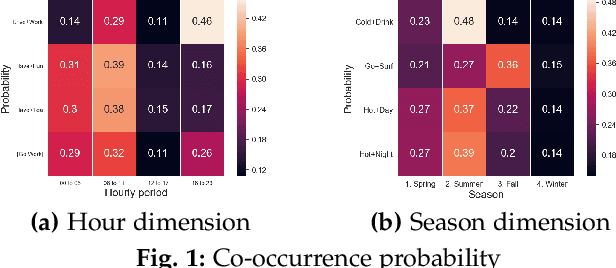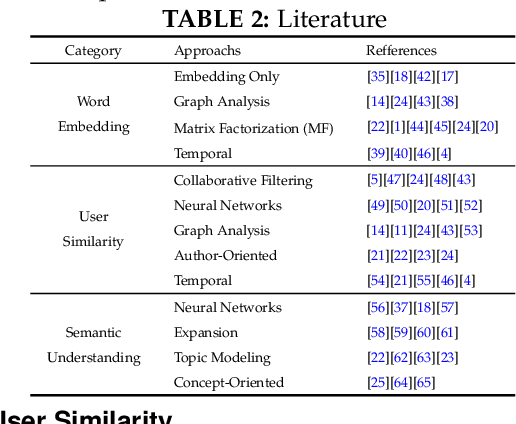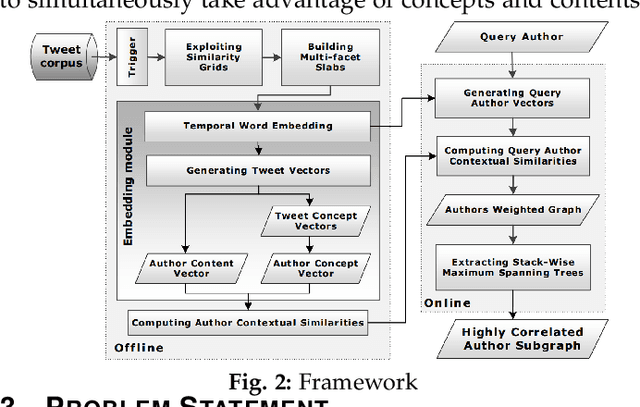SoulMate: Short-text author linking through Multi-aspect temporal-textual embedding
Paper and Code
Oct 27, 2019



Linking authors of short-text contents has important usages in many applications, including Named Entity Recognition (NER) and human community detection. However, certain challenges lie ahead. Firstly, the input short-text contents are noisy, ambiguous, and do not follow the grammatical rules. Secondly, traditional text mining methods fail to effectively extract concepts through words and phrases. Thirdly, the textual contents are temporally skewed, which can affect the semantic understanding by multiple time facets. Finally, using the complementary knowledge-bases makes the results biased to the content of the external database and deviates the understanding and interpretation away from the real nature of the given short text corpus. To overcome these challenges, we devise a neural network-based temporal-textual framework that generates the tightly connected author subgraphs from microblog short-text contents. Our approach, on the one hand, computes the relevance score (edge weight) between the authors through considering a portmanteau of contents and concepts, and on the other hand, employs a stack-wise graph cutting algorithm to extract the communities of the related authors. Experimental results show that compared to other knowledge-centered competitors, our multi-aspect vector space model can achieve a higher performance in linking short-text authors. Additionally, given the author linking task, the more comprehensive the dataset is, the higher the significance of the extracted concepts will be.
 Add to Chrome
Add to Chrome Add to Firefox
Add to Firefox Add to Edge
Add to Edge